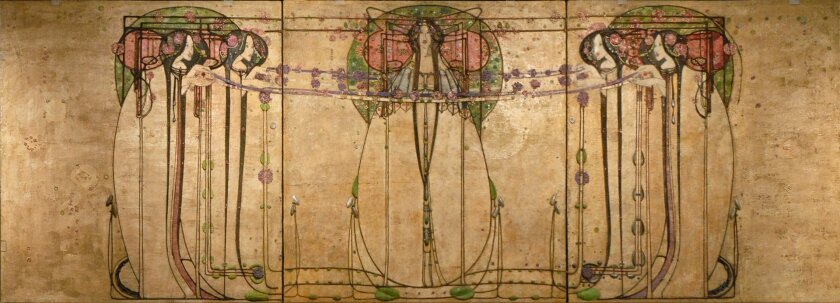When I think of the word powerful, I often associate it with the really unique, rare, extraordinary moments in my life. I envision grandiose gestures or out-of-this-world ideas. However, through my research for BYU’s Art in Motion, three female artists changed my perspective of the word.
Art in Motion, put on by BYU’s Theatre Ballet Studio Company, combines ballet and fine art, celebrating the works of three female artists and various female composers. The three artists span centuries, and all made significant contributions to both their art field and to women’s recognition within it.
The first of these artists was Berthe Morisot (1841-1895). Morisot was born in France to a family of artists. She became one of the leading impressionist artists that helped to define the style. What surprised me most about her work wasn’t her ability, although it is quite impressive, but instead what she chose to paint. Most impressionists at the time painted nature landscapes, but she chose to paint women. Specifically upper-class women performing everyday tasks, often isolated. See the examples below:
None of these women are seen at a ball, eating a fancy dinner, or in their large houses. Rather, they are worried about their appearance, taking care of their children, or doing another task that is common to everyone, despite social status. Morisot focused her talent to expose the beauty and power of everyday life.
This is similar to the next artist featured in the show; Sofonisba Anguissola (1532-1625). Anguissola was an Italian portraitist who grew so popular that she was hired by the Spanish royal court to paint for them for over a decade. I learned that part of the reason for her popularity was the nature of her portraits. Because of the limited resources available to females at the time, she taught herself to paint in informal settings, resulting in her work featuring informal portraits. Instead of people posing for her paintings, she would paint her family members playing chess, crying, or doing other daily activities. See below:
Anguissola’s “everyday” portraits generated so much popularity because of their uniqueness. (If that isn’t ironic, I don't know what is.) Her paintings, along with Morisot’s, speak to the impact of seeing oneself portrayed in media. The artists aren’t only portraying other women, they are depicting the reality of living, the everyday moments that we all experience.
The last artist featured in the show is no exception. Margaret Macdonald Mackintosh (1864-1933) was born in the United Kingdom and had one sister, Frances. Both Margaret and Frances attended the Glasgow School of Art, where they created art using various mediums. Margaret specifically employed metalwork, embroidery, and textiles in addition to watercolor and oil painting. (Metalwork was especially uncommon for women to work with, as it was seen as a demanding “man’s medium.”) Much of Macdonald’s work is inspired by her connection with her sister and their roles as females in the world. Notice the feminine imagery (seen in the roses and feminine shapes) in her artwork below:
Macdonald, in a similar manner to Morisot and Anguissola, highlights the essence of women in her work. Instead of glorifying or belittling the role of women, Macdonald honors what each woman, sister, mother, and daughter is: a connection to life outside of their own. In this fundamental sense, we are all the same.
These three artists have changed my perspective on how I view the everyday parts of my life. Now, instead of just looking forward to the big plans I have coming up, I am going to look forward to the tasks that I know everyone else is also doing. Whether it’s taking a shower, playing a game, or talking with my sister, I know I can create meaningful connections with others.
As you watch Art in Motion, keep these questions in mind:
How does your perspective of “the everyday” change?
What connections do you see between the three artists?
Image citations:
Berthe Morisot. 1841-1895. 1880. Lady at Her Toilette. Place: Art Institute of Chicago. https://library.artstor.org/asset/ARTSTOR_103_41822001803111.
Berthe Morisot, French, 1841-1895. 1885-86. The Bath. Paintings., Oil paintings.. Place: Sterling and Francine Clark Art Institute, Williamstown, Mass., Acquired by Sterling and Francine Clark, 1949. https://library.artstor.org/asset/AMICO_CLARK_103904040.
Berthe Morisot. 1871-1872. On the Balcony. Place: The Art Institute of Chicago, Gift of Mrs. Charles Netcher in memory of Charles Netcher II. https://library.artstor.org/asset/AMICO_CHICAGO_1031150254.
Sofonisba Anguissola (c. 1532-1625). 1555. Game of Chess with Portraits of the Painter's Three Sisters and a Servant. painting. Place: Muzeum Narodowe, Poznan, Poland. https://library.artstor.org/asset/LESSING_ART_10310483263.
Sofonisba Anguissola (c. 1532-1625). 17th Century. Little Boy bitten by a Crayfish and a smiling Girl (Asdrubale Being Bitten by a Crab). painting. Place: Musée Magnin, Dijon. https://library.artstor.org/asset/ARMNIG_10313259960.
Sofonisba Anguissola (c. 1532-1625). ca. 1555. Portrait of the Artist's Sisters and Brother. https://library.artstor.org/asset/AHSC_ORPHANS_1071313544.
Margaret Macdonald Mackintosh (1864-1933). 1901. The Heart of the Rose.
Margaret Macdonald Mackintosh (1864-1933). 1900. The May Queen.
Margaret Macdonald Mackintosh (1864-1933). 1903. Oh ye, all ye that walk in the Willowwood.












